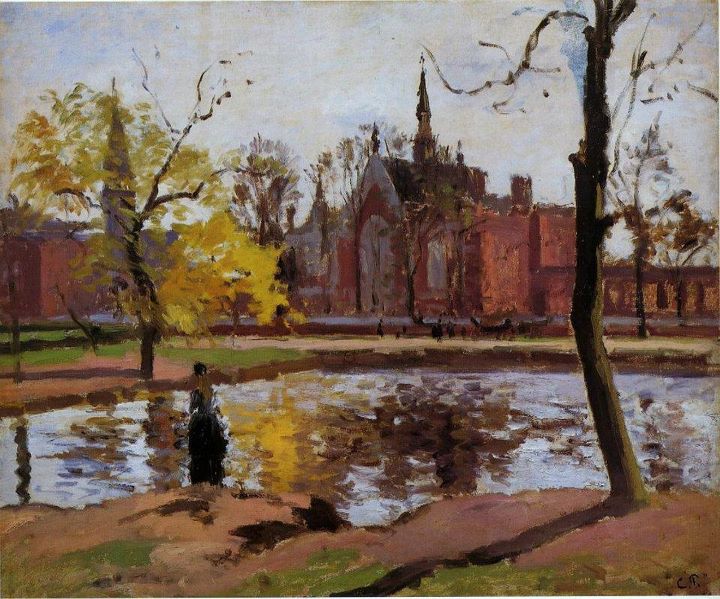Barbara Longhi was an Italian painter🎨.
She was much admired in her lifetime as a portraitist, although most of her portraits are now lost or unattributed.
Her work, such as her many Madonna and Child paintings, earned her a fine reputation as an artist.
Longhi is one of the few female artists mentioned in the second edition (1568) of Italian painter and art historian Giorgio Vasari's epic work Lives of the Most Excellent Painters, Sculptors, and Architects. Vasari writes that Longhi "draws very well, and she has begun to colour some things with good grace and manner".
But as Germaine Greer discussed in her The Obstacle Race: The Fortunes of Women Painters and Their Work, such "haphazard" selections of women artists including Longhi rarely offered "serious criticism of their achievement".
Greer then offered her own assessment: "Barbara's output was considerable, all small pictures, remarkable for their purity of line and soft brilliance of colour" and "Barbara Longhi brings to her extremely conservative picture-making a simplicity and intensity of feeling quite beyond her mannerist father and her dilettante brother".
The Museo d'Arte della Città di Ravenna owns seven works by Barbara Longhi, as well as eleven of her father Luca's and three by her brother Francesco.
Her work is represented in the collections of the Musée du Louvre (Paris), Pinacoteca di Brera (Milan), Pinacoteca Nazionale di Bologna, Museo Biblioteca del Grappa, Walters Art Museum (Baltimore, Maryland) and Indianapolis Museum of Art, and also in the Santa Maria Maggiore (Ravenna). | © Wikipedia
Barbara Longhi (Ravenna, 21 settembre 1552 - Ravenna, 23 dicembre 1638) è stata una pittrice Italiana.
Fu stimata ritrattista, ma solo poche sue opere ci sono pervenute, in parte riconducibili all'attività svolta nella bottega del padre, dove le era affidato il compito di produrre piccole tele su tema religioso, destinate alla devozione privata.
Nacque a Ravenna, dove trascorse l'intera sua esistenza.
Era figlia di Luca (1507-1580), noto pittore manierista🎨 e di Bernardina Baronzelli.
Come suo fratello maggiore Francesco (1544-1618), ricevette le prime nozioni pittoriche nella bottega paterna.
Collaborò anche alla realizzazione di pale d'altare, entrando così in contatto con il processo di commercializzazione, che allora si svolgeva attraverso mecenati.
Completò la sua formazione nel 1570, ma i suoi legami con la famiglia e con la bottega del padre rimasero forti.
Si conosce poco della sua vita e s'ignora se si sia mai sposata.
Della sua produzione come ritrattista ci è pervenuto solo il ritratto di un Monaco Camaldolese - uno dei pochi che include una data, anche se l'ultima cifra non è del tutto leggibile (1570 o 1573?) - e unico raffigurante un soggetto maschile adulto.
Lo ha ritratto nel suo studio, vestito del saio bianco camaldolese, tra i suoi libri aperti e scritti a mano. Questo dipinto si conserva oggi al Museo d'arte della città di Ravenna.
Due sue tele di piccolo formato, a soggetto religioso, sono state da lei siglate e una è datata. Una pala d'altare a Russi è firmata per esteso e datata 1618.
La Santa Caterina d'Alessandria, oggi al Museo d'arte della città di Ravenna, proviene dal monastero di Classe in Ravenna.
Nelle Nozze di Cana, dipinto ad olio su un muro del refettorio dello stesso convento di Classe, opera di Luca Longhi del 1579-1580 poi ultimata da suo figlio Francesco, secondo la tradizione riconosciuta la donna in primo piano, rivolta verso lo spettatore, sarebbe un ritratto di Barbara Longhi. | © Wikipedia
Luca Longhi (1507-1580) | Le Nozze di Cana | particolare | Ritratto della figlia Barbara, 1580





























.jpg)

























